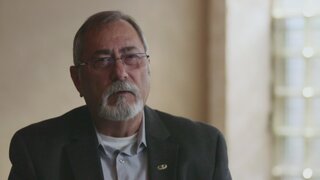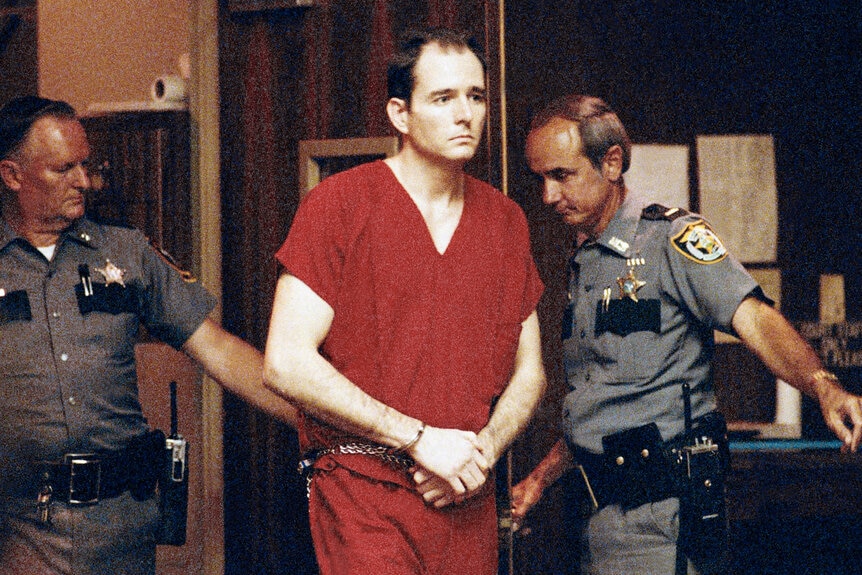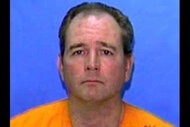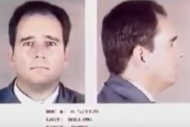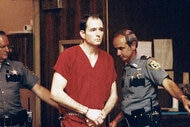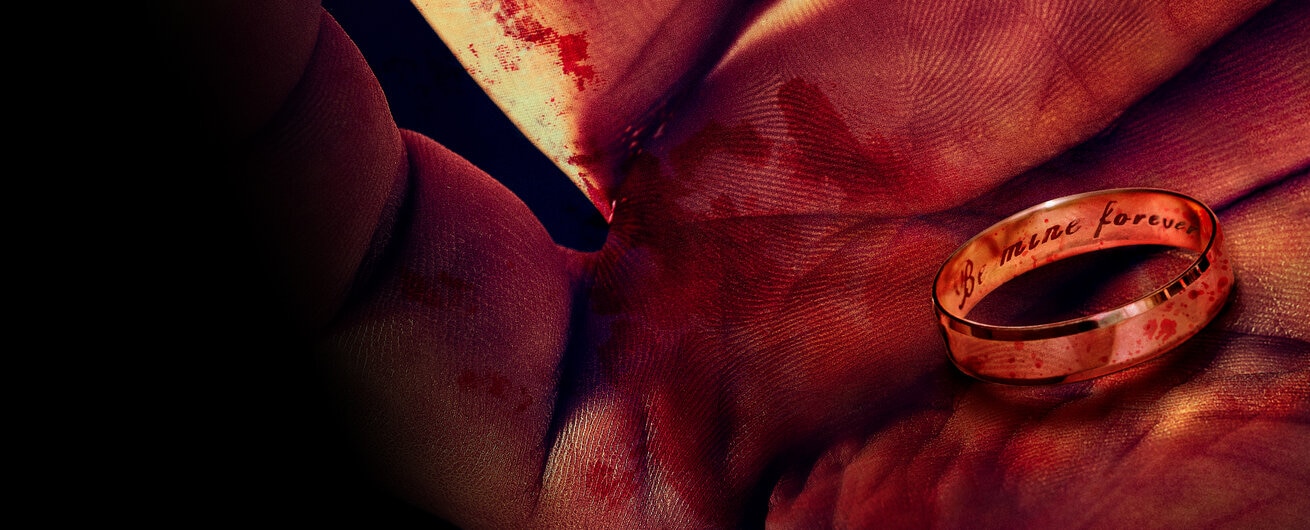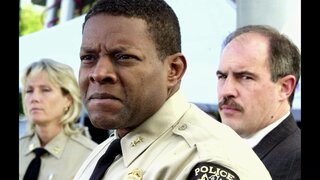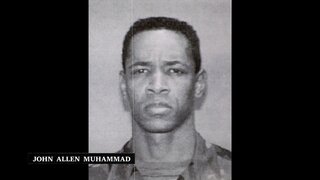Create a free profile to get unlimited access to exclusive videos, breaking news, sweepstakes, and more!
The Twisted Tale Of 'Gainesville Ripper' Killer Danny Rolling, Who Murdered And Mutilated College Kids
Danny Rolling, known for killing five university students, aspired to be a "superstar" like Ted Bundy.
Murders A-Z is a collection of true crime stories that take an in-depth look at both little-known and famous murders throughout history.
In the summer of 1990, the college town of Gainesville, Florida found itself in the grip of terror after five students were murdered in quick succession. The victims had been fatally stabbed, and, in some cases, raped and mutilated, their bodies posed in sexual positions. One was found decapitated.
Quickly dubbed the “The Gainesville Ripper,” the serial killer initially eluded capture when police first identified a troubled teen as their main suspect, before realizing the gruesome murders were actually the work of Danny Rolling, a 30-something drifter with a long criminal history. Rolling was already in custody for armed robbery; he would later be given five death sentences, one for every murder he committed that August.
RELATED: Everything We Know About The ‘Hollywood Ripper,’ A ‘Serial Sexual-Thrill Killer’
Before his execution, police would learn the Gainesville murders weren’t his only homicides and the entire affair would inspire the maker of Scream, one of the most famous horror films of all time.
Who Is "The Gainsville Ripper" Danny Rolling?
Perhaps ironically given his nefarious life of crime, Daniel Harold Rolling was born in 1954 in Shreveport, Louisiana to a police lieutenant who allegedly abused his wife and children, both physically and verbally. "He'd beat the hell out of them," Danny’s cousin Charles Strozier would later say, according to the South Florida Sun-Sentinel. "It was like a switch. It would be on one minute, off the next."
As a child, Danny would run away from home and camp in the woods, indulging in petty crime and voyeurism, by his own admission during the court trial.
After dropping out of high school, Rolling joined the Air Force in 1972, but he was discharged honorably after only serving two years, reports the Orlando Sentinel. (According to court documents, Rolling's commanding officer told his mother that "he was not mature and did not have the nervous system or maturity necessary for military life.")
While he briefly lived what seemed to be a normal life — becoming active in the Pentecostal Church, getting married, and having a daughter — his mother claimed he “lost it” after his wife filed for divorce, in a videotaped testimony during the 1994 court trial. Over the following decade, he would turn to crime and spent extended periods of time behind bars for armed robbery in Georgia, Alabama and Mississippi. “Lucifer told me eight souls for every year I’d done in prison,” said Rolling, according to CNN — counting the triple homicide of the Grissom family in his hometown Shreveport, he did kill at least eight people.
Danny Rolling's Victims
The Grissom family — William, 55, his daughter, Julie, 24, and grandson Sean, 8 — were preparing dinner when a man broke into their apartment, stabbing them all to death. Julie was raped and posed; bite marks were found on her breasts. Rolling, who was long considered the only suspect in the 1989 murder of the Grissom family after police found similarities between the crime scenes, confessed to their murders in the moments before he was executed, reports the Sarasota Herald-Tribune. Rolling was back in Shreveport in the fall of 1989 after being paroled from jail in Mississippi.
Months later, in May 1990, Rolling got into a fight with his father and shot him twice, once in the stomach and once in the face, reports the Orlando-Sentinel. Wanted for attempted murder, he fled Louisiana, staying briefly in Sarasota, Florida, where he broke into the home of Janet Frake and raped her, reports the Sarasota Herald-Tribune. Frake reportedly talked her way out of becoming Rolling’s fourth murder victim, and though Rolling wore a mask and was never charged with the crime, DNA evidence triggered by Sarasota police in 1996 indicated a match.
In late August 1990, Rolling rolled into Gainesville, home of the University of Florida, setting up a campsite in the woods outside town, just as he had done as a teenage runaway. In the early morning hours of August 24, armed with a pistol and a military hunting knife, he broke into the apartment of Sonja Larson and Christina Powell, two teenage first-year students at the university. He murdered Larson first, covering her mouth with duct tape and stabbing her in her sleep. He then raped Powell before killing her and cutting off her nipples. Afterward, he cleaned the crime scene and posed both victims in sexualized positions, reports CNN.
The next night he broke into the home of 18-year-old Christa Hoyt, who attended nearby Santa Fe Community College. He waited for her to return home, and then raped and stabbed her, rupturing her aorta. He cut off her nipples and decapitated her, putting her head on a bookshelf, and propping her body up in bed, according to CNN.
After being unable to reach their daughter for several days, Christina Powell’s parents traveled from their home in Jacksonville, Florida, and discovered her and Larson's bodies on the afternoon of August 26th. In the early morning hours of the 27th, police discovered Hoyt’s body after she missed her midnight shift as a clerk at the Alachua County Sheriff's Department.
That night, as news of the gruesome murders rippled through campus, Rolling struck again, breaking into the apartment of Tracy Paules and Manuel Taboada, both 23. Rolling stabbed Taboada as he slept, but the former football player awoke and fought back before being subdued by 31 stabs. Paules walked in on the attack, then ran into the bathroom and locked the door, but Rolling broke it down. He then raped her for hours, before finally killing her with three stab wounds to the back. Their bodies were discovered the following day. According to the Orlando-Sentinel, Paules' last words were seeking a tragic confirmation: ''You're the one, aren't you?'
As news of the killings spread through Gainesville, panic set in, with many students choosing to leave the campus. “Parents took a lot of their children out of college,” former University of Florida music major Sharon Barnes told the Ocala Star-Banner years later. Police, meanwhile, focused on Edward Humphrey, a 19-year-old man diagnosed with manic depression who had circumstantial ties to the crimes and had recently been arrested for assaulting his grandmother who insisted that he didn't hit her, according to the New York Times. Humphrey’s bail was set at $1 million and he would eventually serve 14 months in state prison on assault charges, before being exonerated. "My brother wasn't well off mentally to begin with, and this has rattled him to his foundations," said his brother George to the New York Times.
In the meantime, the real killer had returned to his old ways of armed robbery. On September 7, 1990, Rolling walked into a Winn-Dixie supermarket brandishing a pistol. An unidentified witness told the Ocala Star-Banner he yelled out, “This is a robbery. Get your money out!” Police quickly responded and after a quick chase, took Rolling into custody. “Boy, you guys are good,” arresting officer Ken Raym remembers him saying at the time.
How Was Danny Rolling Caught?
Unsurprisingly, the killings stopped, life in Gainesville returned to normal and investigators began building their case. While investigating a bank robbery that occurred right after the murders, police discovered Rolling’s campsite, and evidence tying him to the crimes, including a cassette tape with chilling country songs referring to his plans. DNA evidence, including semen, later confirmed Rolling’s involvement in the murders. While in custody, Rolling was named as the primary suspect in the Grissom killings and sentenced to life in prison for bank robbery.
In February 1994, on the eve of his murder trial, Rolling pled guilty to five counts of murder and three counts each of sexual battery and armed burglary. "I've been running from first one thing and then another all my life, whether from problems at home, or with the law, or from myself," he told the court, reports the Los Angeles Times. "But there are some things that you just can't run from, and this being one of those." A month later, a Florida jury sentenced him to death, by a vote of 12 to none.
While on death row, Rolling sold paintings, reports the Gainesville Sun, and wrote a book with his fiancée, the true crime writer Sondra London, titled, The Making of a Serial Killer: The True Story of the Gainesville Murders in the Killer's Own Words. A Florida judge later ruled that the state could seize all profits from the book, invoking the Son of Sam law.
Danny Rolling's Crimes Inspire Scream
In the early '90s, aspiring screenwriter Kevin Williamson drew inspiration from the case of The Gainesville Ripper for a screenplay he was writing about a series of murders in a college town and the circuitous search for the killers. That screenplay would eventually be turned into the 1996 film Scream, which was directed by “Master of Horror” Wes Craven and revitalize the slasher movie genre for the self-aware Generation X.
Where Is Danny Rolling Now?
After 12 years on death row, Danny Rolling was put to death by lethal injection on October 25, 2006.
When asked for his final words, Rolling burst into song, singing a rambling gospel number, with the refrain, “none greater than thee, O Lord, none greater than thee," before the mics were turned off and the drugs entered his bloodstream. Shortly before his execution, he gave a note to his “spiritual adviser,” the Reverend Mike Hudspeth, confessing to the murders of the Grissom family 17 years earlier. “I, and I alone am guilty,” Rolling wrote, according to the Herald-Tribune. “It was my hand that took those precious lights out of this ole dark world. With all my heart & soul would I could bring them back.”
Rolling, who aspired to be as infamous as Ted Bundy, never quite saw his dream fulfilled, with the authorities turning the focus on victims and their families rather than glamorizing him.
Oxygen's Mark of a Killer delves into the psyches of serial killers with one-hour episodes focusing on their postmortem signatures. Watch the series now to find out how Danny Rolling became the Gainesville Ripper.
(This story was previously published on January 15, 2019 and has been updated.)

